Habitats: This bear lives in a great variety of ecosystems along the Tropical Andes including dry forests, moist lowland forests, montane cloud forests, dry and moist shrublands, and high altitude shrubland and grasslands. It remains unclear whether these bears can live entirely in high-altitude grasslands (paramo and puna) without using the forest. In the north coast of Peru and in southern Bolivia, Andean bears still inhabit remnants of tropical dry forest. Several scientists have reported seasonal shifts in habitat use due to changes in food availability.

Andean bear_T ornatus_Paucartambo province Peru_puna grassland_San Diego Zoo Global
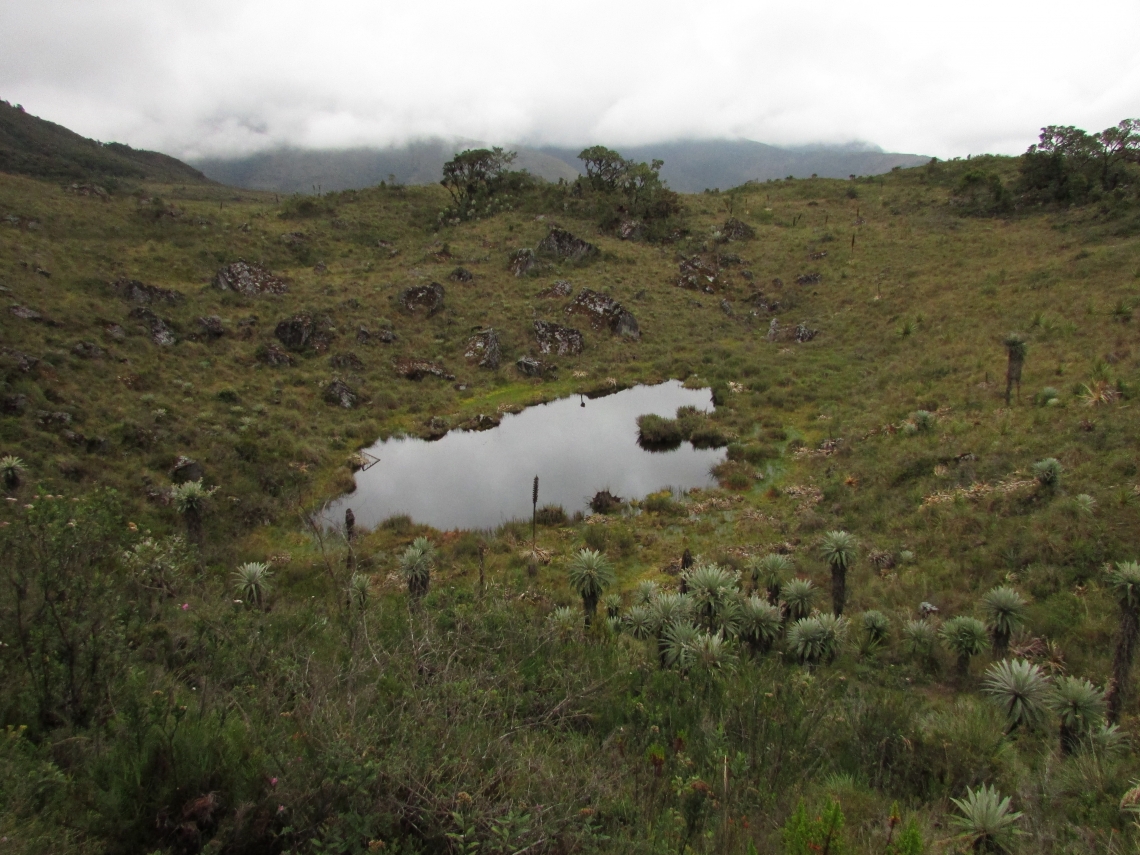
Andean bear_T ornatus_Gusca Colombia_lake in páramo_Fundación Wii
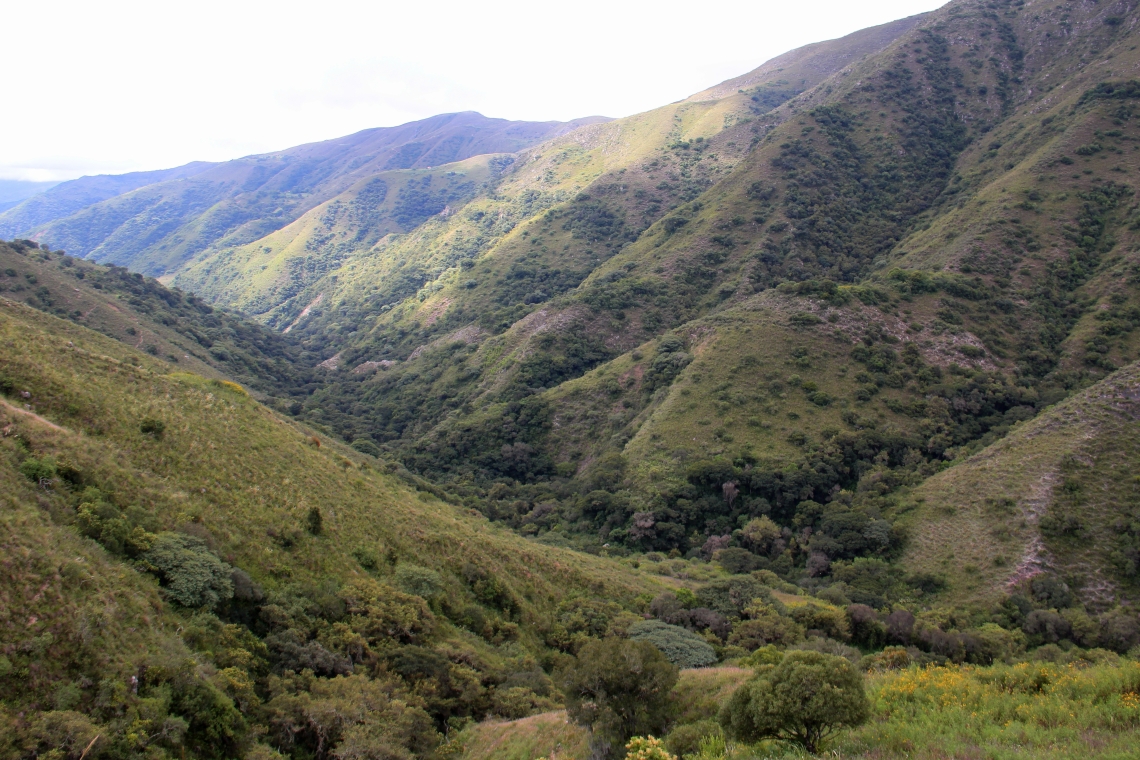
Andean bear_T ornatus_Tarija Bolivia_grassland forest mosaic landscape_Ximena Vélez-Liendo
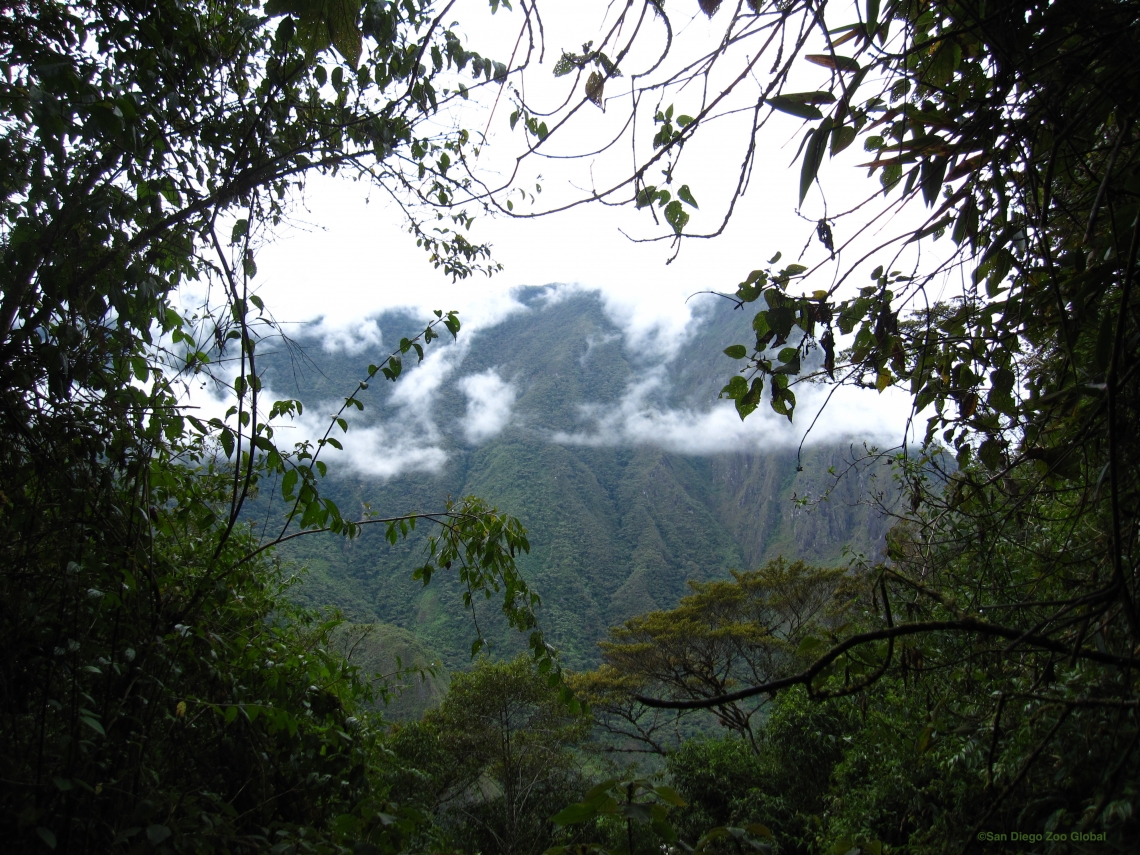
Andean bear_T ornatus_Quispicanchi province Peru_cloud forest_San Diego Zoo Global
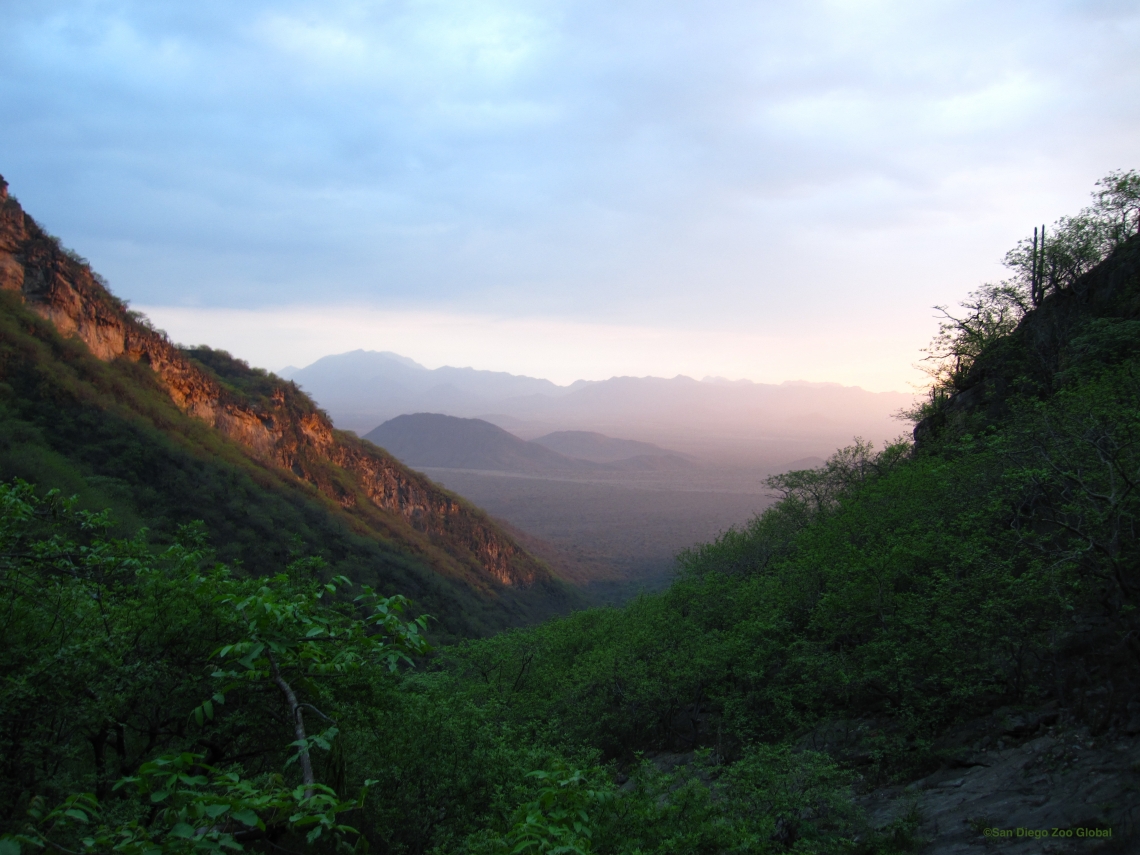
Andean bear_T ornatus_Ferreñafe province Peru_tropical dry forest_San Diego Zoo Global
Diet: Andean bears are omnivorous, and possess an associated suite of physical adaptations, including a wide skull with strong jaw muscles and a pseudo-thumb (not as developed as that of the giant panda) to aid in consuming a diet of fibrous vegetative matter. Bromeliads and palm trees constitute the most commonly encountered food items in the scats of Andean bears across most of their range, but over 300 species of plants have been found in their diet. On a seasonal basis, fruits may be critical sources of carbohydrates, protein, and fat. Opportunistically they prey or scavenge on over a dozen vertebrates, including rabbits and mountain tapirs, but most notably will kill free-ranging livestock. Andean bears also forage on a range of domestic crops including maize, passion fruit, and avocado, and rarely on human garbage.
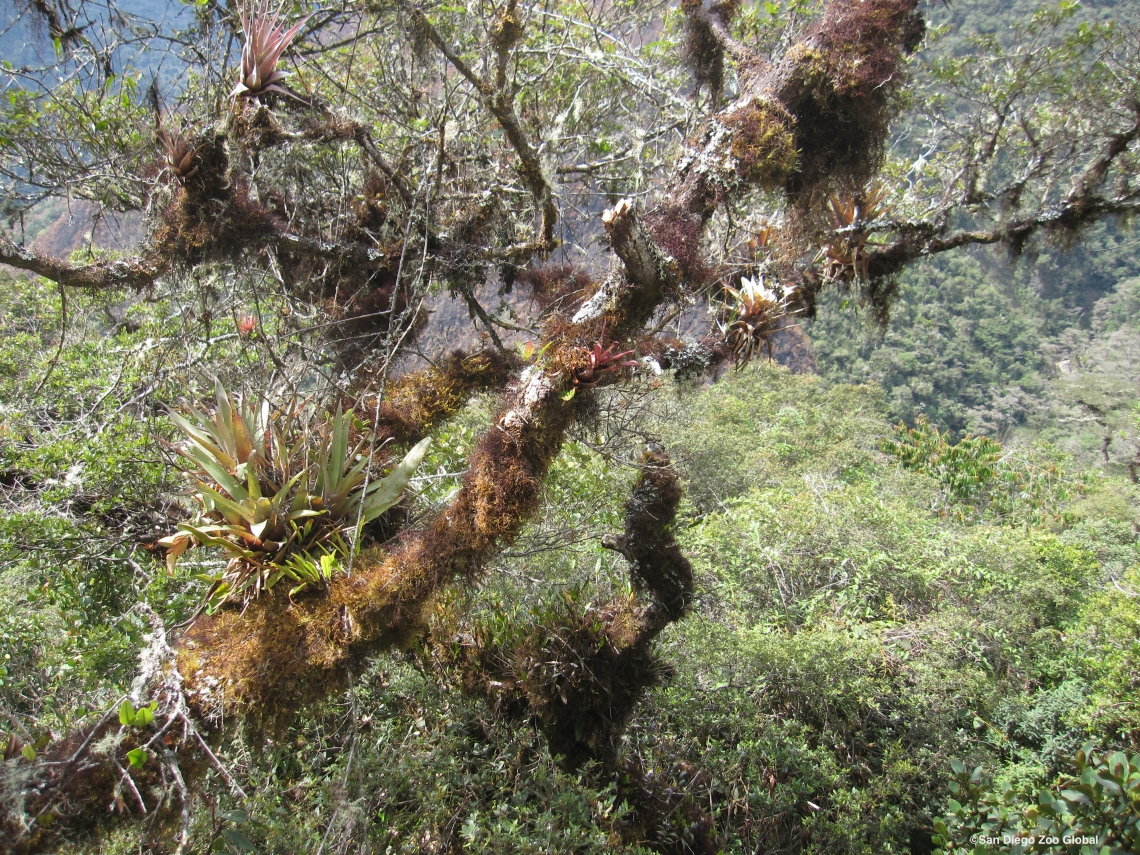
Andean bear_T ornatus_Kcosñipata Peru_epiphytic bromeliads growing on tree_San Diego Zoo Global
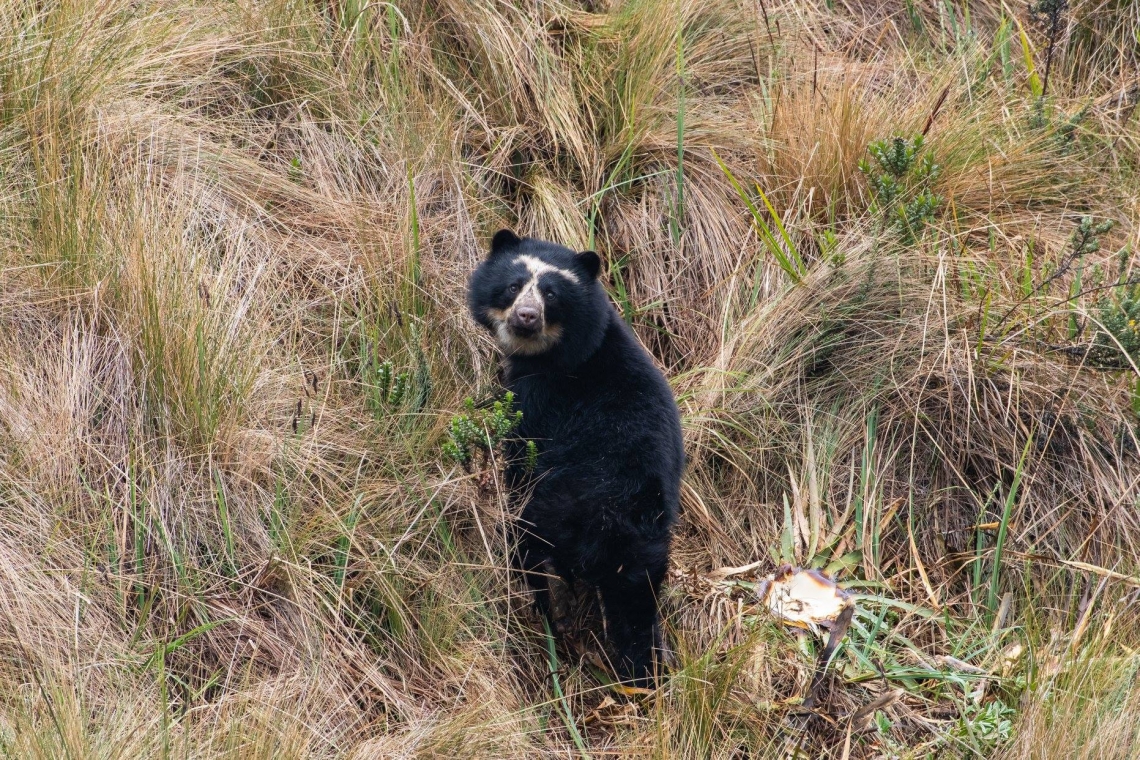
Andean bear_T ornatus_Cayambe Coca National Park_Ecuador_bear with consumed terrestrial bromeliad_Sean Kite
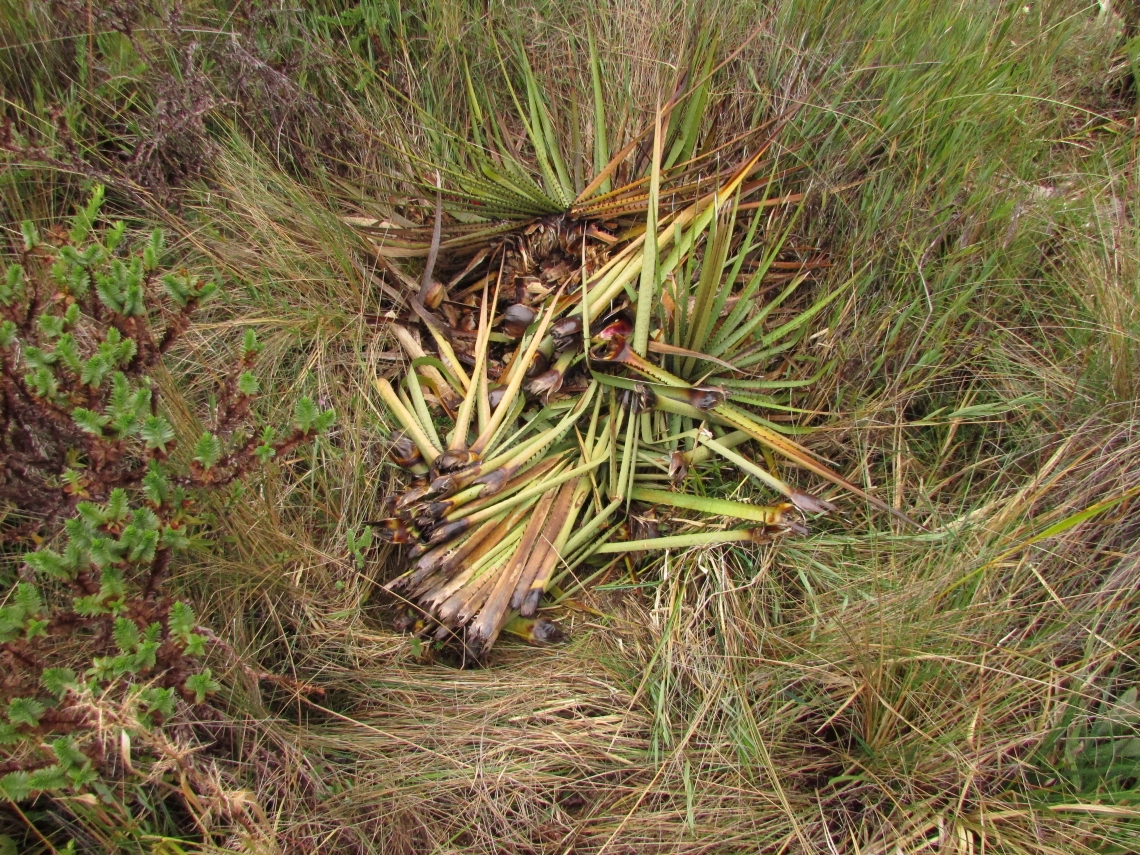
Andean bear_T ornatus_Colombia_remnants from foraged terrestrial bromeliad_Fundación Wii-Corpoboyaca-Colombia
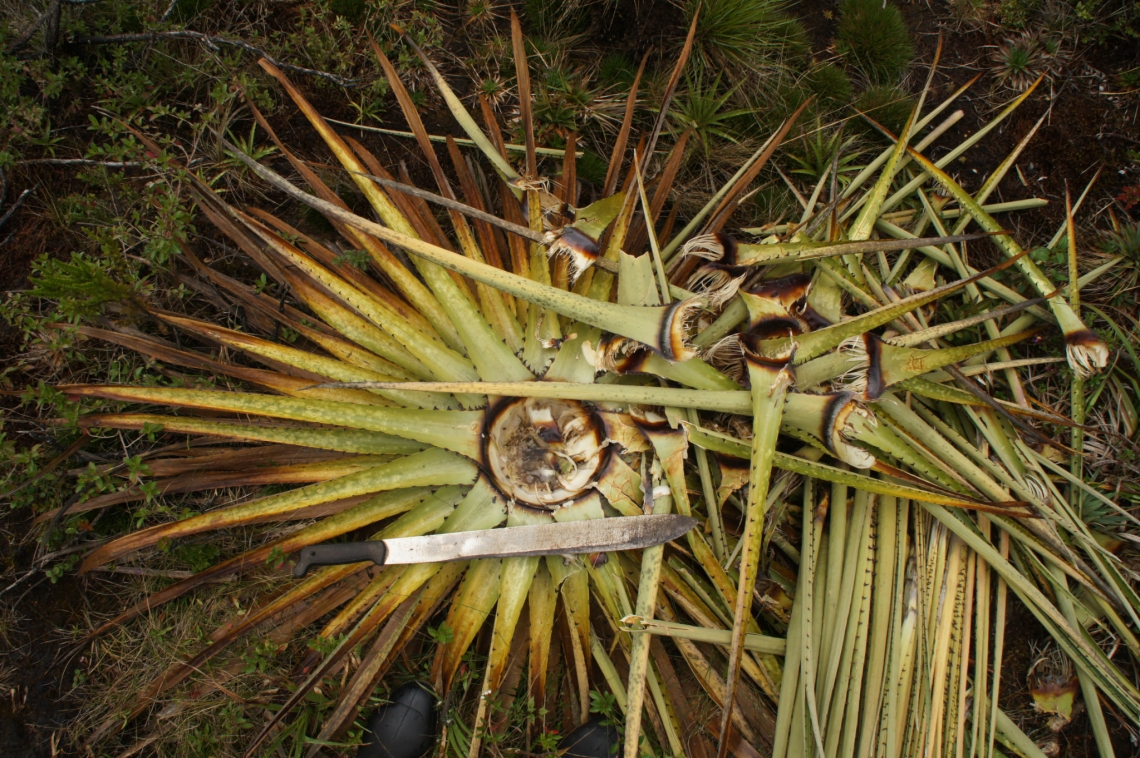
Andean bear_T ornatus_Colombia_remnants from foraged terrestrial bromeliad_Nicolas Reyes-Amaya-Fundación Wii
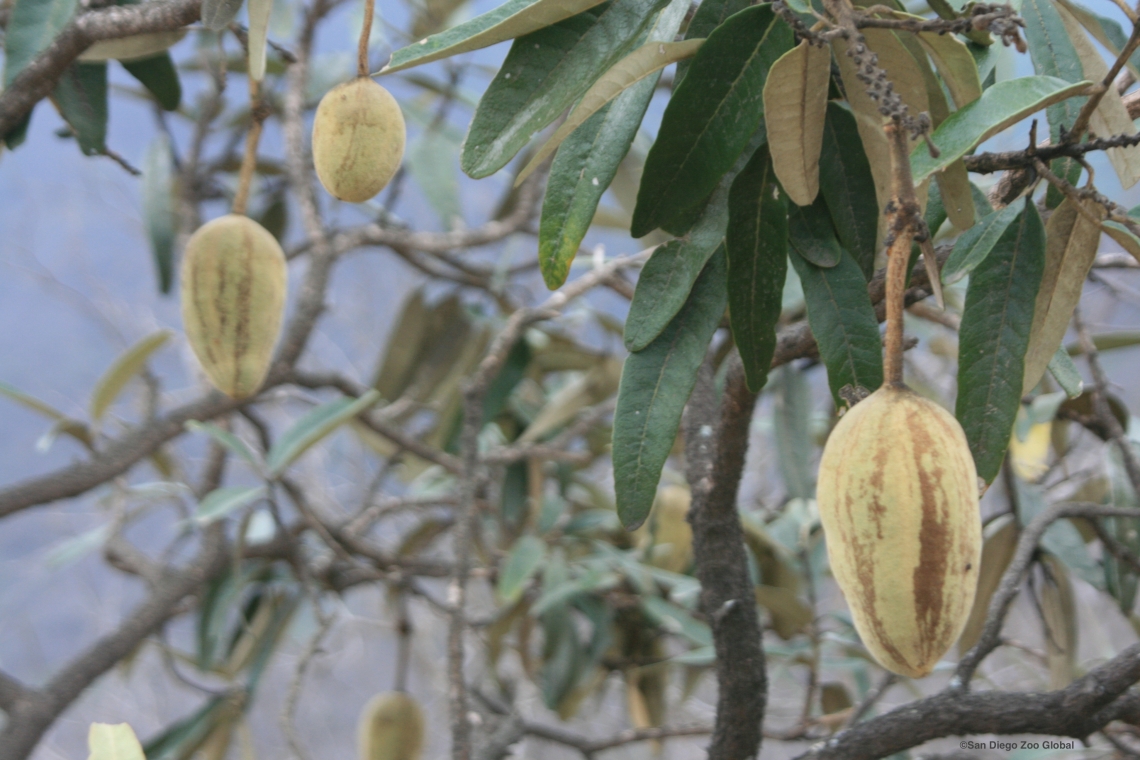
Andean bear_T ornatus_Ferreñafe province Peru_sapote fruit Colicodendron scabridum_San Diego Zoo Global

Andean bear_T_ornatus_Colombia_bear feces_Jose Gregorio Hernandez-Fundación Wii
Hibernation: Food is available year-round across their range, so Andean bears do not hibernate. However, in some areas food is seasonally scarce, and bears lose considerable weight.
Reproduction: Information on reproduction is limited for Andean bears and has mainly come from captive individuals. The species is polyestrous, a facultative seasonal breeder, and experiences delayed implantation. In captivity, females show three to four estrus cycles during a single breeding season. The timing of births in captivity varies with latitude. Captive bears in their native latitudes give birth in all seasons, but more commonly in summer–autumn, which is the reverse of Andean bears housed in northern zoos. One study in the wild in Peru found mating to occur December–January and birthing during June–October (austral winter). But births in January and June have been recorded for wild bears in Ecuador.
In captivity, litter size varies from 1 to 4, with singletons and twins being most common; limited field data also suggest that litters typically contain 1 or 2 cubs. Mothers give birth in dens, which they may build or may use existing rock cavities. They remain in or near the den site for up to 3 months, sometimes losing considerable weight. Timing of birth may be linked to the need of mothers to leave
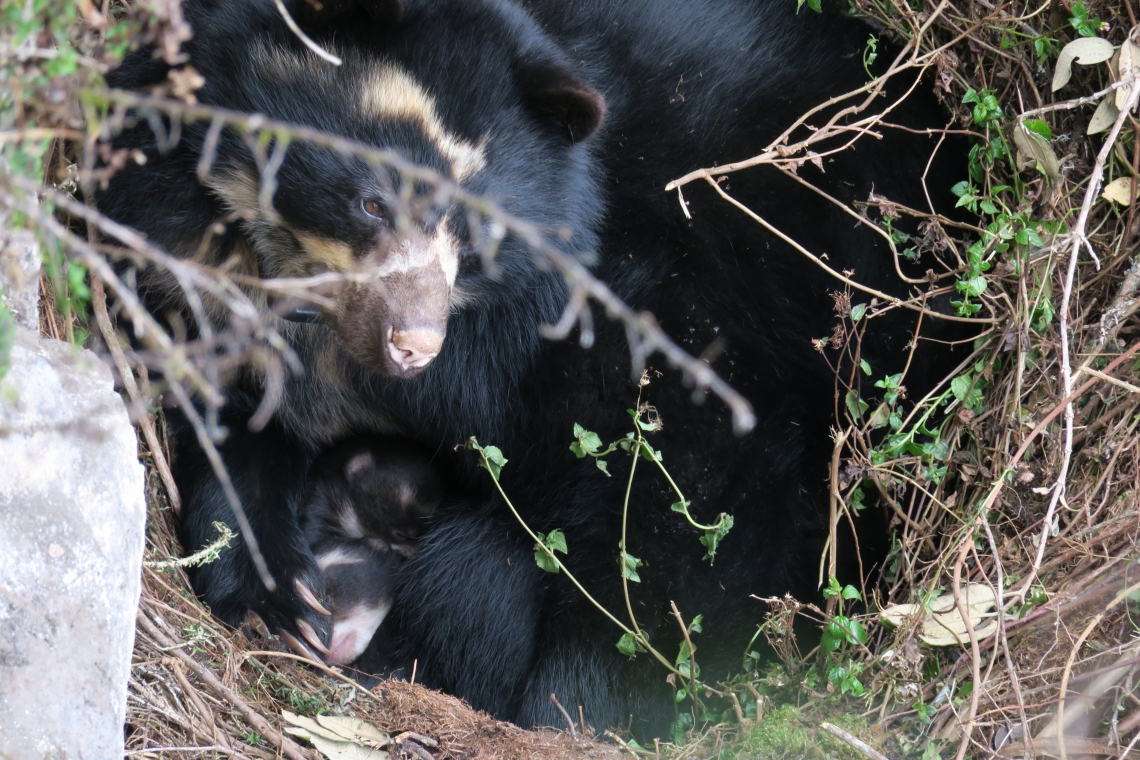
Andean bear_T ornatus_Cayambe Coca National Park Ecuador_ bear family in maternal den_David Jackson_1
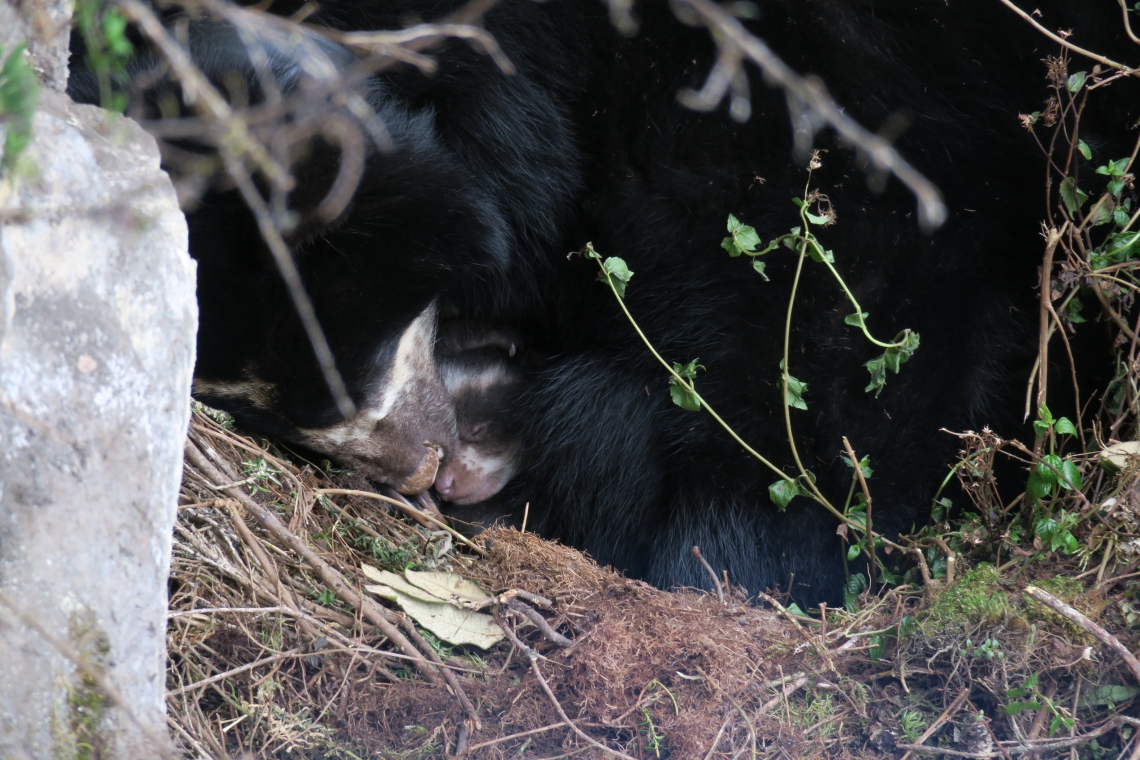
Andean bear_T ornatus_Cayambe Coca National Park Ecuador_ bear family in maternal den_David Jackson_2

Andean bear_T ornatus_Cayambe Coca National Park Ecuador_ bear cub in maternal den_Armando Castellanos
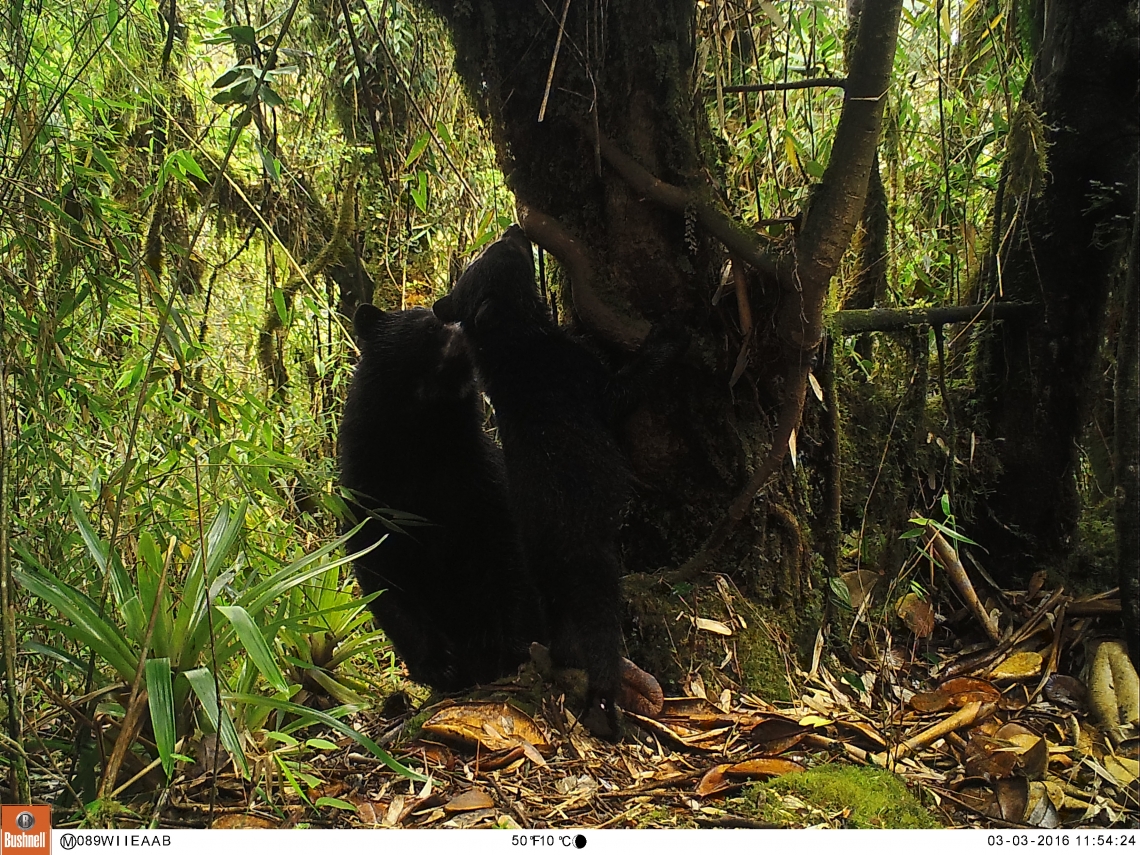
Andean bear_T ornatus_Colombia_female with cub sniffing tree_Fundación Wii-Empresa de Acueducto de Bogota-Colombia_2
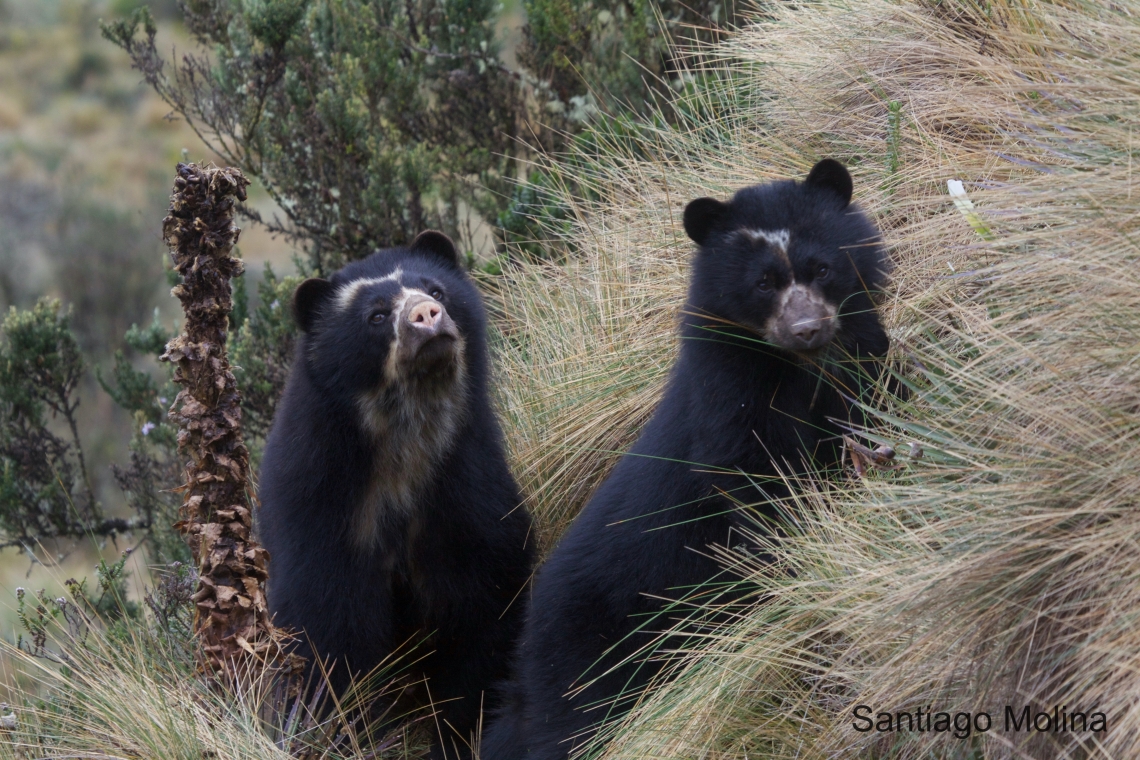
Andean bear_T ornatus_Papallacta Ecuador_adult female with subadult_Santiago Molina
Andean bear_T ornatus_Colombia_video female followed by male_Fundación Wii
Andean bear_T ornatus_Guasca Colombia_video adult female two cubs one subadult_Fundación Wii